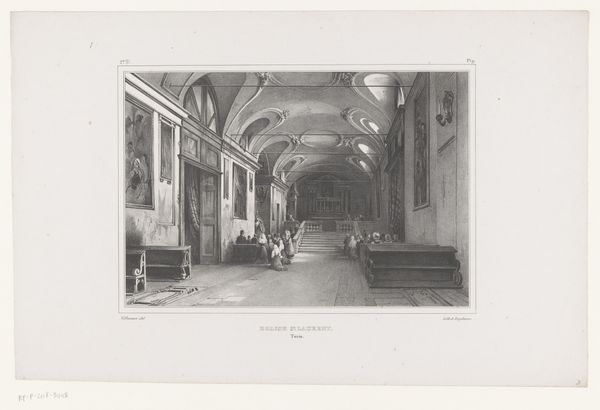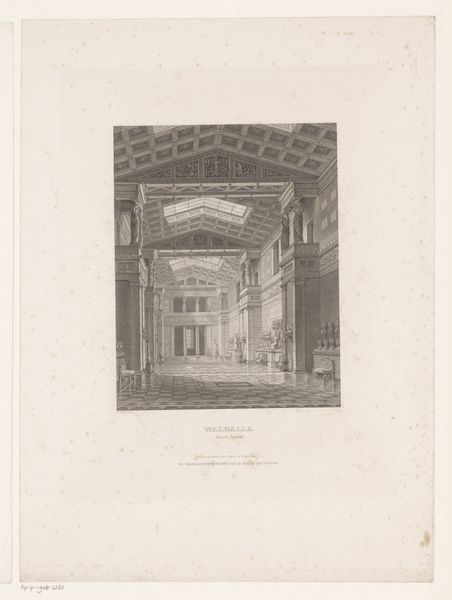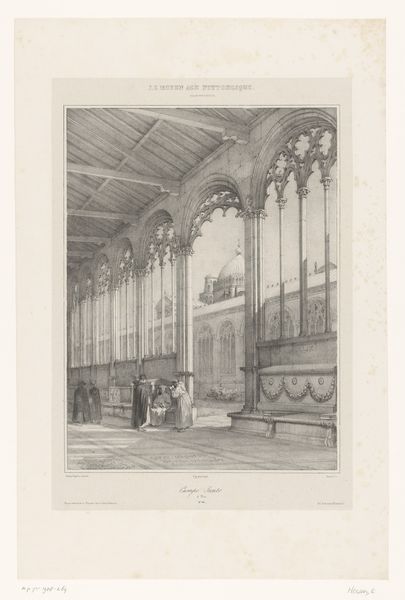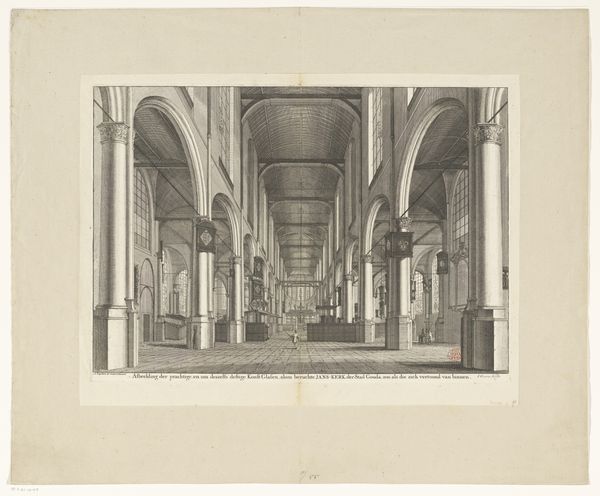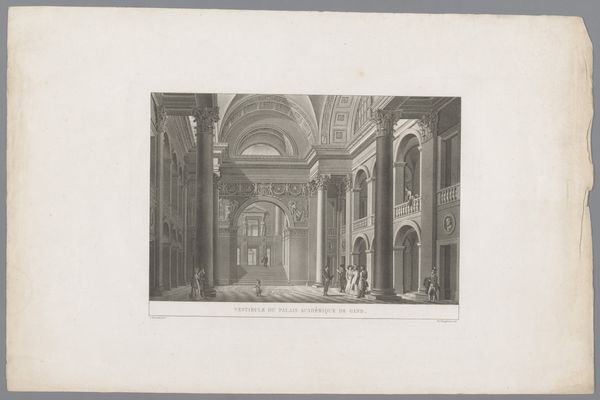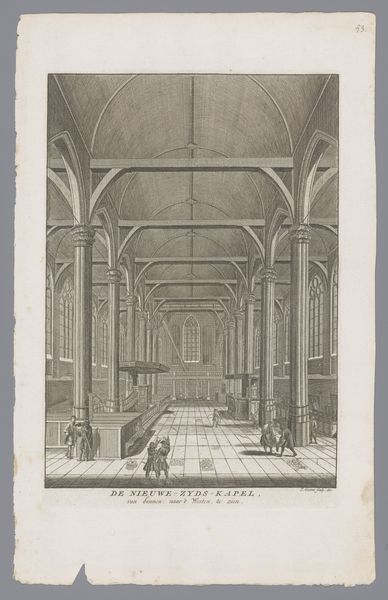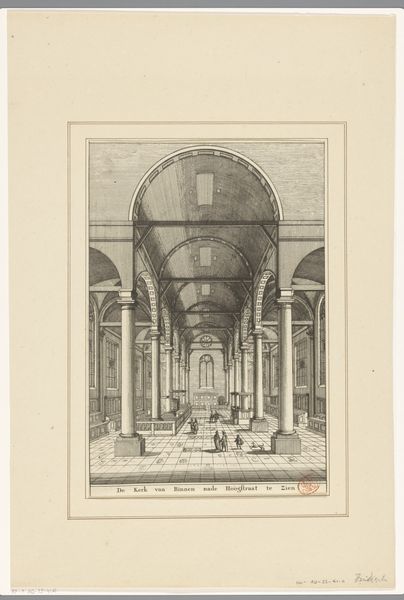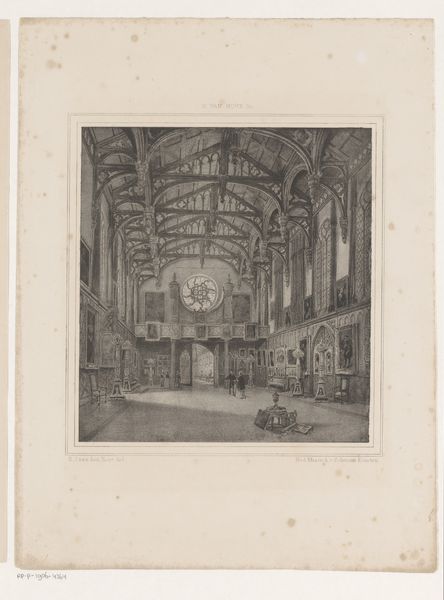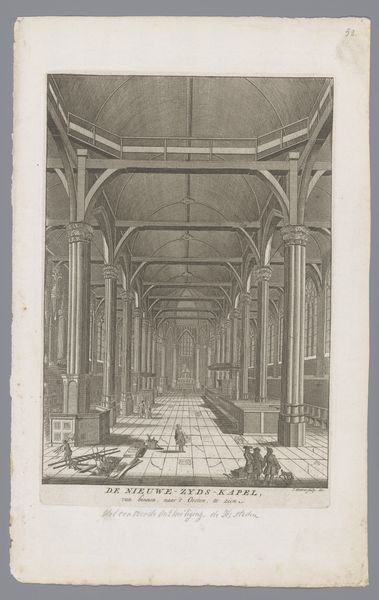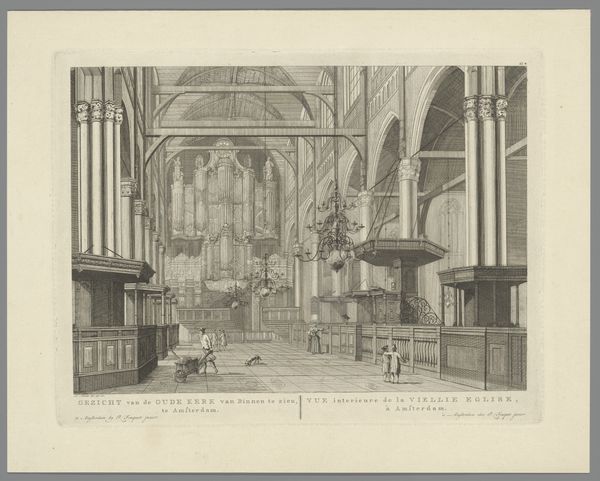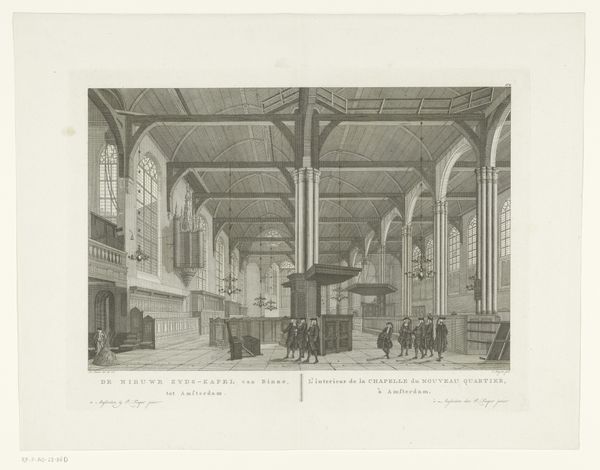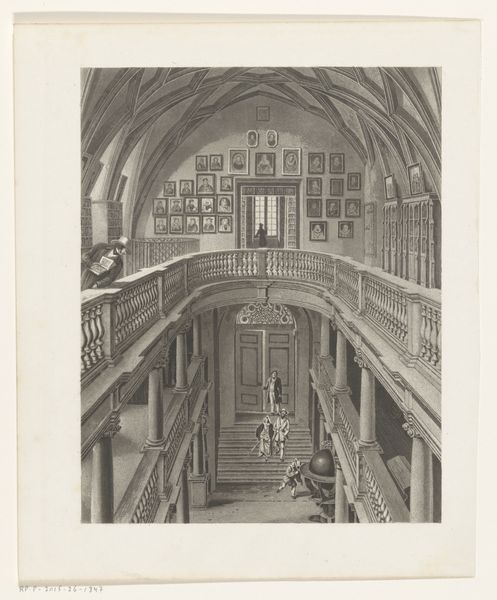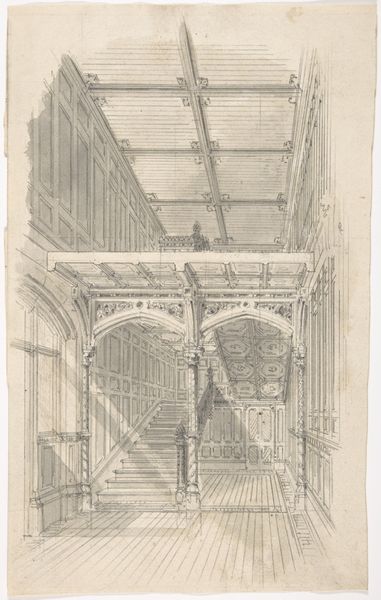
print, etching, engraving, architecture
# print
#
etching
#
old engraving style
#
perspective
#
genre-painting
#
history-painting
#
engraving
#
architecture
#
realism
Dimensions: height 229 mm, width 185 mm
Copyright: Rijks Museum: Open Domain
Curator: The Rijksmuseum holds this detailed print, titled "Interieur van de Wasserkirche te Zürich, 1715", made by Franz Hegi in 1848 using etching and engraving. Editor: Immediately, the scale jumps out at me. That exaggerated perspective dwarfs the figures; the books recede into infinity! What symbols were they hoping to convey? Curator: The architecture itself is hugely symbolic. The Wasserkirche, despite its name meaning "water church," actually has pagan origins, connected to Roman baths and purported executions of Zurich's patron saints. Think about Hegi returning to that visual history in the 19th century, during a period of social upheaval and industrial shifts. Editor: I see columns resembling a classical temple mixed with what feels like late gothic arches – fascinating visual echoes that tie the religious, the historical, and the literary together. The way the people congregate reminds me a bit of an annunciation scene—is that panel at the far end an altar piece? Curator: Maybe. Hegi wasn’t just concerned with religious connotations. Etching and engraving were themselves means of mass production, which allowed such interior scenes—previously exclusive to the wealthy—to reach a wider audience. We need to think about how Hegi’s choice of this *particular* architecture coincided with this growth in print culture. Editor: It speaks volumes. That panel at the far end is framed by an arch supported by more classical columns, like a portal into a past they could only see filtered through their inherited architectural and religious visual language. The people grouped in front of it could be interpreted as searching for guidance. Curator: Right, these interiors create and sell accessible and sanitized images of these historically contested locations to new classes of consumers, literally producing access through distribution of new techniques and aesthetic sensibilities. Editor: This image resonates beyond just documentation; the composition and perspective make this a stage of inherited traditions and the architecture itself has an emotional charge to it, telling many stories simultaneously. Curator: Yes. Seeing the ways he combines both the past and the possibilities of its era deepens the narrative and highlights how closely culture and context are entwined, giving insight into production methods, technological distribution, and aesthetics during that pivotal moment in European history.
Comments
No comments
Be the first to comment and join the conversation on the ultimate creative platform.
